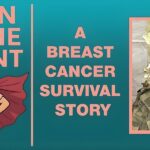When discussing how consciousness might influence pain and emotional suffering, it involves exploring the profound connection between the mind and body. It is not about dismissing the reality of physical discomfort or emotional distress, but rather understanding how one’s awareness and perspective can significantly shape the experience of these sensations. This field of inquiry often draws from ancient wisdom traditions and is increasingly supported by modern scientific research, particularly in areas like neuroplasticity and mindfulness. By actively engaging with one’s internal states, individuals can potentially alter how they perceive and react to both bodily sensations and emotional turmoil, fostering a pathway toward greater well-being. This deeper understanding highlights the power of internal processes in mediating our external and internal experiences of discomfort.
The ability to consciously observe thoughts and feelings, rather than being swept away by them, marks a critical step in this healing process. This self-awareness allows for a degree of separation from the immediate sensation, creating a space where different responses become possible. Emotional suffering, for instance, can often be amplified by repetitive negative thought patterns or by resistance to difficult feelings. Consciousness provides the capacity to recognize these patterns and choose a different way of relating to them. Similarly, with physical pain, while the initial sensation might be unavoidable, the associated distress, anxiety, or frustration can often be mitigated by a conscious shift in attention or interpretation. This active engagement of the mind in understanding and relating to pain and suffering offers a powerful avenue for personal healing and resilience.
Read also: The Secrets of Okinawa: Longevity and Lifestyle
How Does Consciousness Interpret and Modulate Pain Signals?
The experience of pain, whether physical or emotional, is not simply a direct transmission of signals from the body or an external event. Instead, it is a complex phenomenon heavily influenced by the brain’s interpretation and processing, where consciousness plays a crucial role. For instance, physical pain signals travel from the body to the brain, but it is the brain that ultimately decides how these signals are perceived—whether as mild discomfort, intense agony, or even as something manageable. Emotional suffering, too, is processed through neural pathways that overlap with those involved in physical pain, explaining why emotional distress can feel as profoundly real as a physical injury. Areas of the brain, such as certain regions involved in emotion and self-awareness, are linked to both types of pain, highlighting this intrinsic connection.
Consciousness allows individuals to go beyond merely detecting a stimulus; it enables them to evaluate its intensity, assign meaning to it, and decide on a response. For example, a person might consciously decide to divert their attention from a nagging ache, or to reinterpret a challenging emotional situation not as an insurmountable obstacle, but as an opportunity for growth and learning. This capacity for conscious adjustment suggests that while pain signals might be present, the level of suffering associated with them can be modulated by how one chooses to engage with those signals. It is about shifting one’s relationship with the sensation, creating a sense of psychological distance, rather than trying to eliminate it entirely through sheer force of will. Through conscious awareness, individuals gain a degree of agency over their internal experiences, influencing how intensely they feel discomfort and distress, and, how they respond to life’s challenges.
What Role Does Mindfulness Play in Transforming Suffering?

Mindfulness, often described as the practice of paying attention to the present moment without judgment, is a powerful tool through which consciousness can facilitate the healing of pain and emotional suffering. When someone practices mindfulness, they learn to observe their thoughts, feelings, and bodily sensations as they arise, without getting carried away by them. For example, a person experiencing chronic physical pain might typically react with aversion, anxiety, or frustration, which can amplify the initial discomfort. Through mindfulness, they can learn to acknowledge the sensation of pain, observe its qualities (e.g., sharp, dull, throbbing), and notice the associated thoughts and emotions, all without engaging in a struggle against them or wishing them away. This non-reactive awareness can significantly reduce the “second arrow” of suffering—the mental anguish and emotional distress that often accompany the initial physical or emotional pain, which is frequently a greater source of distress than the pain itself.
For emotional suffering, mindfulness helps individuals to sit with difficult emotions rather than repressing or avoiding them. When someone feels sadness, anger, or fear, mindfulness encourages them to fully acknowledge and experience these emotions in the present moment, understanding that emotions, like all experiences, are impermanent and will eventually pass. This acceptance can prevent emotions from becoming overwhelming or festering beneath the surface, allowing them to move through one’s experience more fluidly. Research suggests that mindfulness can influence brain regions associated with emotional regulation and self-awareness, leading to improved emotional resilience and a greater capacity to navigate life’s inevitable ups and downs. By fostering an attitude of self-compassion—treating oneself with kindness and understanding during moments of distress—mindfulness helps to soften the intensity of emotional pain and encourages a more healing and adaptive response from within.
How Can Cognitive Approaches Influence Pain and Emotional Well-being?
Beyond simple awareness, the way one thinks about pain and emotional suffering can profoundly impact the experience. Cognitive approaches leverage consciousness to identify and challenge unhelpful thought patterns that often amplify distress. For instance, someone experiencing chronic pain might develop automatic thoughts like, “This pain will never go away,” or “I cannot do anything productive with this pain.” These thoughts, while understandable given the circumstances, can create a self-reinforcing cycle of despair and helplessness, intensifying the perceived suffering. Similarly, individuals grappling with emotional suffering might engage in rumination, replaying painful events over and over, or catastrophizing about future outcomes based on current feelings.
Conscious engagement through cognitive techniques, such as those used in various therapeutic approaches, helps individuals recognize these maladaptive thought patterns. By consciously questioning the validity of these thoughts and actively seeking alternative, more balanced interpretations, people can begin to “rewire” their brain’s response to pain and emotional triggers. For example, instead of “I can’t do anything,” one might reframe it as, “Today, I will focus on what I can do, even with this discomfort, and prioritize rest when needed.” This deliberate shift in perspective, powered by conscious thought and consistent practice, can lead to a significant reduction in the emotional component of pain and foster more adaptive coping strategies for emotional suffering. The brain’s inherent neuroplasticity, its remarkable ability to reorganize itself by forming new connections, means that with consistent practice, conscious cognitive reframing can indeed lead to lasting changes in how one perceives and responds to both physical and emotional challenges, leading to sustained improvements in well-being.
Read also: Mindful Leadership Redefined: Brett Hill and The Mindful Coach®
What is the Connection Between Consciousness, Self-Regulation, and Healing?

The ability of consciousness to facilitate healing in pain and emotional suffering is deeply tied to its capacity for self-regulation. This involves the conscious effort to manage one’s internal states, including thoughts, emotions, and physiological responses. When an individual consciously chooses to engage in practices like focused breathing exercises, meditation, or guided imagery, they are actively regulating their nervous system. For instance, slow, conscious breathing can activate the parasympathetic nervous system, which promotes relaxation and systematically reduces the body’s stress response, potentially lessening physical tension and pain signals that are often amplified by stress. This deliberate control over bodily responses can create a more conducive internal environment for healing.
For emotional suffering, self-regulation through conscious practices means developing skills to prevent emotional overwhelm. Instead of reacting impulsively to strong feelings, an individual can consciously choose to pause, observe the emotion without judgment, and respond in a more constructive way. This might involve simply labeling the emotion to reduce its intensity, engaging in grounding techniques to reconnect with the present moment, or intentionally shifting focus to something that provides a sense of peace or purpose. Over time, consistent self-regulation practices, driven by conscious intent and persistent effort, can lead to structural and functional changes in the brain that enhance emotional resilience and promote a more balanced emotional state. This active role of consciousness in managing one’s internal landscape is a core element in the journey towards healing both physical pain and emotional suffering, enabling individuals to cultivate greater well-being and inner peace by transforming their relationship with distress.
















